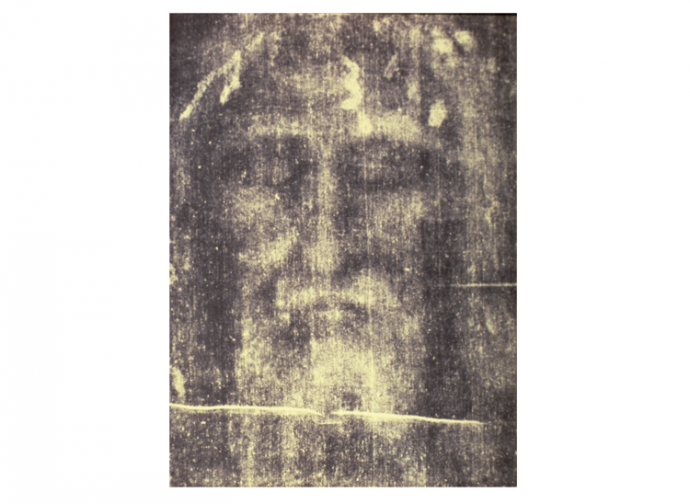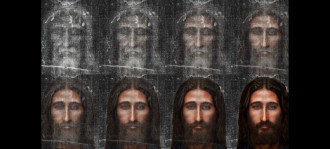Christ’s burial Shroud caught between X-rays and artificial intelligence
Curiously, two years after it’s publication, numerous media outlets decided to spread the news about research published in 2022, that dates the sacred linen Shroud to the time of Jesus. The media and social media boom that ensued, confirms the “Face” never ceases to attract attention.

Suddenly, quite unexpectedly, just after mid-August this year, news about the Shroud broke in Great Britain, and was immediately taken up by the media in other countries, even by Aljazeera: the venerated linen has been dated to the first century A.D. with a new method of analysis using X-rays.
It all started with an article that appeared in the Daily Mail Online Science on 19 August by Stacy Liberatore, announcing research that had been published... two years ago. The journalist did not explain why she had only now become aware of this text published in 2022 in Heritage. But to be fair: it’s better to be late than never!
The authors of the research, physicist Liberato De Caro together with others, had already published a previous article in Heritage in 2019 concerning this new WAXS (Wide Angle X-ray Scattering) method that uses wide-angle X-rays to assess the structural degradation that an ancient linen fabric undergoes over time, in order to assign it an age. The method is non-destructive and can be applied to even a small thread sample of half a millimetre.
The news contained in the Heritage article of 2022, relaunched by the Daily Mail Online, concerns the dating of a thread of the Shroud using the WAXS method: the comparison with threads from different eras has made it possible to place the origin of the Shroud at the time of Christ, because the measurements obtained are comparable with those of a sample of linen, dating from 55-74 A.D., which comes from the archaeological site of Masada, in Israel.
In the media that picked up on the news, there was also the opinion of physicist Paolo Di Lazzaro, who advanced some perplexity about this new method of investigation, as is always the case in scientific debate. But the success of the first article, which made the Shroud leap into the top ten most searched topics on Google in English, encouraged the Daily Mail Online to publish others in the following days: thus, on 20 August, Stacy Liberatore spoke of David Rolfe, the atheist filmmaker who was converted by studying the Shroud for a documentary he was making, Silent Witness, while, also on 20 August, William Hunter discussed various interesting sindonological topics, including the research done by archaeologist William Meacham on some threads of the Shroud at the Stable Isotopes Laboratory in Hong Kong. According to this isotope examination, the linen used to make the Shroud grew in the Middle East.
Among the topics examined, however, Hunter also re-proposes the experiment by the forensic anthropologist Matteo Borrini and chemist Luigi Garlaschelli, who wanted to prove that the rivulets of blood on the Shroud were fake. Experiment widely denied, as can be read in La Nuova Bussola Quotidiana.
Again Stacy Liberatore on 22 August wrote an article on the Shroud, this time to talk about new research by engineer Giulio Fanti, who among other things claims to have found creatinine in some blood particles, evidence of trauma suffered by the Man of the Shroud.
In view of the growing interest, Stacy Liberatore published a further article on 23 August in which I was interviewed with French researcher Tristan Casabianca on the research we published in Archaeometry together with statisticians Benedetto Torrisi and Giuseppe Pernagallo. This is an analysis of the raw data obtained by the laboratories that dated the Shroud to the Middle Ages in 1988. This statistical analysis definitively disproved the validity of the 1988 test because it was conducted on a sample that was not representative of the entire shroud. This was also reported in La Nuova Bussola Quotidiana
On 28 August, the Daily Mail Online returns to the subject again with an article by Ellyn Lapointe, which presents further research by Liberato De Caro, and again discusses the statistical analysis presented in Archaeometry.
Also on 30 August, a new article appears in the Daily Mail Online, this time by Rob Waugh, presenting a three-year-old book that reconstructs the hypothetical history of the Shroud in the early centuries.
Now other newspapers chase the news published by the Daily Mail. The French site of CIELT (Centre International d'Études sur le Linceul de Turin) in its August press review lists 170 articles - of which it provides the link - that mentioned the Shroud in various newspapers around the world that month. But once again it is the Daily Mail that the driving force on 2 September with a new piece signed by Rob Waugh, which brings up other relics related to the Passion of Christ: the Sudarium of Oviedo, the Tunic of Argenteuil, the Veronica of the Vatican.
This succession of news, even dated ones, makes one reflect on the interest that the Shroud arouses in people and the consequent involvement of the mass media that also talk about it to solicit views on their websites. The articles are followed below by hundreds of contrasting comments, in the whirlwind of like or not like, thumbs up or thumbs down.
 Among the various curiosities aroused by the Shroud, there is also that of Jesus' appearance, especially his face. So the Daily Mail Online questioned the artificial intelligence Merlin asking: ‘Can you generate a realistic image of Jesus Christ based on the face found on the Shroud of Turin’? On 22 August, Jonathan Chadwick published the result (left).
Among the various curiosities aroused by the Shroud, there is also that of Jesus' appearance, especially his face. So the Daily Mail Online questioned the artificial intelligence Merlin asking: ‘Can you generate a realistic image of Jesus Christ based on the face found on the Shroud of Turin’? On 22 August, Jonathan Chadwick published the result (left).
The day before, 21 August, the Daily Express had also turned to artificial intelligence, but using a different programme: Midjourney. The result was published by Michael Moran as ‘the true face of Jesus ’ (right).
 But if this is the real face of Jesus, why is it different from the other? Yet they are both generated by artificial intelligence! The answer is simple: they are two different programmes, which evidently use different information. Ultimately, artificial intelligence does nothing more than process the data that has been entered.
But if this is the real face of Jesus, why is it different from the other? Yet they are both generated by artificial intelligence! The answer is simple: they are two different programmes, which evidently use different information. Ultimately, artificial intelligence does nothing more than process the data that has been entered.
A third artificial intelligence-generated elaboration of the face of Christ from the Shroud can be found in Stacy Liberatore's article of 23 August in the Daily Mail Online. It is the work of the graphic designer Otangelo Grasso.
So, different results that may please more or less depending on one's aesthetic taste, but none are really comparable to the inimitable original: the Shroud face!
The Shroud that wrapped Jesus: the latest discoveries
The Shroud is a relic for believers, while for scientists it is a mysterious object that animates their continuous debate. For years Emanuela Marinelli has been dealing with it, as an expert but also as a believer who reminds us of the history of the cloth and the latest discoveries, indicating the Crucifix made by Monsignor Giulio Ricci as one of the most "truthful" representations.
“Jesus, arise”: a study on the Shroud is disproved by the Shroud
A Spanish Plastic Surgery Specialist, Bernardo Hontanilla Calatayud, says he has studied the image on the Shroud and can affirm that it shows “the typical gesture of a person trying to rise from the supine position”. Even the facial muscles are those of someone alive. But this statement, on the trail of the Resurrection, is refuted by science and also by the Shroud itself because the image is not the image of a body about to rise.


